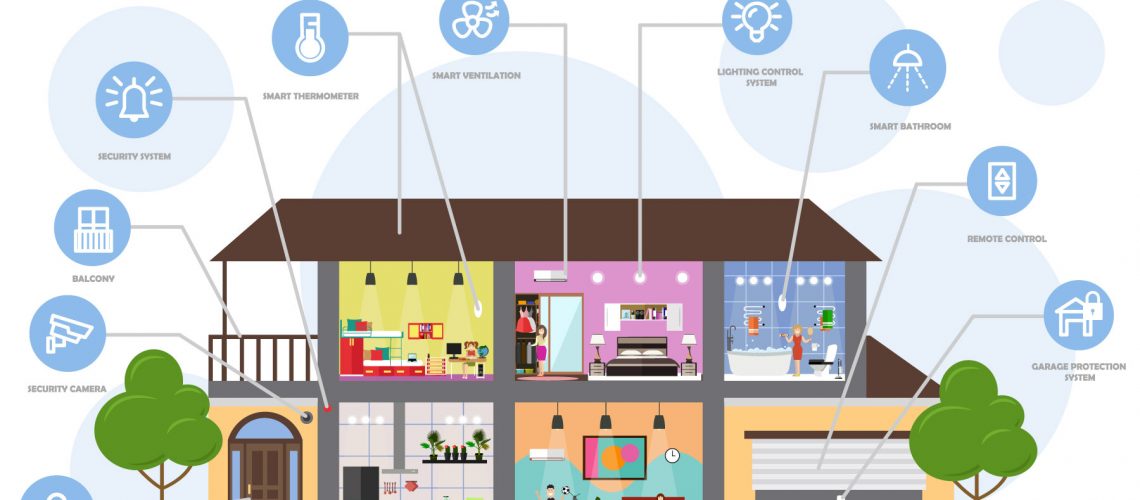Secure your smart home devices from hackers:
- In the recent times hackers spoke to their young children via compromised devices and fortunately this didn’t happen in India . Few cyber security threats and attacks against smart home devices as illustrated as below:
- Man-in-the-middle: An attacker breaches, interrupts or spoofs communications between two systems.
- Data and identity theft: Data generated by smart appliances provide cyber attackers with an ample amount of sensitive information that will be exploited via social engineering for fake transactions and identify theft.
- Device hijacking: The attacker hijacks and effectively assumes control of a device.
- Distributed Denial of Service (DDoS): A denial-of-service attack (DoS attack) attempts to render a machine or network resource unavailable to its intended users by temporarily or indefinitely disrupting services of a host connected to the Internet.
- Permanent Denial of Service (PDoS): Permanent denial-of-service attacks (PDoS), also known as plashing, is an attack that damages the device so badly that it requires replacement.
Securing Smart Homes:
- Its highly recommended that all online websites and smart devices are now allowing users to opt into two-step authentication. This is a two-step process for verifying information on email and SMS, before allowing you to access to your account.
- It could true, that you are the only person to try logging into your account, it helps to know you’ll be notified if someone does try to hack in or trying get your information.
- Few smartphones and smart home tech gadgets are recording user conversations without their knowledge such as a microphone, that are later enabled. This makes trusting those devices unconditionally a bit of a risk.
- Check the recording settings and delete your voice recordings if you found any. You can always turn off the voice control features on these devices. You may alternatively check the websites if you are unable to find the options on the devices.
- Most of the smartphones and smart home devices are shipped with default passwords, while most of the companies require you to change the default password before using them. Changing you default password is first and only way not to being hacked by hackers, hackers out there have all the default passwords of all electronic gadgets.
- Here are few tips for passwords are
- Making them longer than eight characters
- Creating passwords that are unrelated to pets, kids, birthdays, or other obvious combinations
- Use of Capital Letter and Special Character and Numbers
- Do not standardise the password for all gadgets
- Change the password once in 3 months
- Alternatively you may use the password generator to create random passwords.
- Store the passwords in password locker and the have dual authentication for the password locker.
- If you have purchased the gadget quite while again, it could happen that software updates are no longer compatible with the operating system, it will be time to upgrade.
- Upgraded technology will always have new features, fewer glitches of old cutting-edge and more advanced ways to secure the device that will not be available on older models.
- While not worrying about your older versions of the smartphone and smart home gadgets, keeping software updated will not only save you from hackers but also give you access to many new features.
- Also have the habit of keep the updating to newest versions of the software. Its highly recommended to keep the have the habit to enabling your smartphone and smart home gadgets to auto update mode, so that many security issues and bug fixes are most often fixed in periodic software updates and releases.
- If you are really concerned about your ISP’s Wi-Fi security systems, you may use a VPN. Virtual Private Network creates a closed system from any Internet connection, including public ones where you’re most at risk.
- A VPN keeps your Internet protocol IP from not being seen. This prevents hackers from knowing your locations and also makes your Internet activity invisible.
- Also note that enabling the VPN, you not be able to have the experience or use technology to its full capacity, say for example google maps needs the GPS to be enabled, so that it guides you to alternate roads during traffic jams.
- There is only one way to your privacy and security at home is to avoid using devices that connect to the Internet. In today’s world, that’s an achievable task. The best way is to consider which devices are absolutely necessary for work, pleasure, and convenience, and slim down the list of smart-enabled devices.
- There’s no device on this earth which can claim it 100% free from cybercrime. In order to better embrace your smart home technology, be sure you’re smart about how and when you use it.



